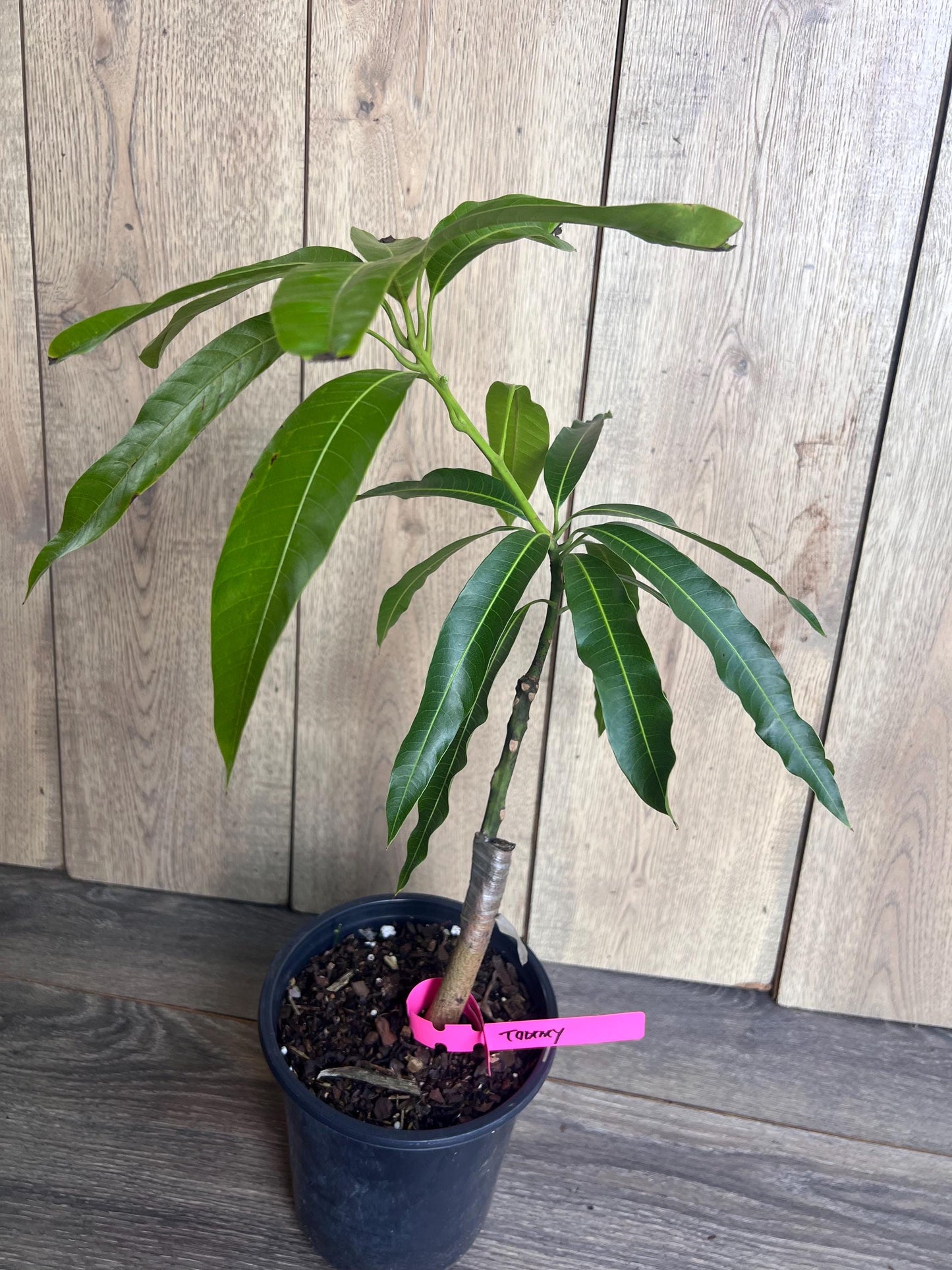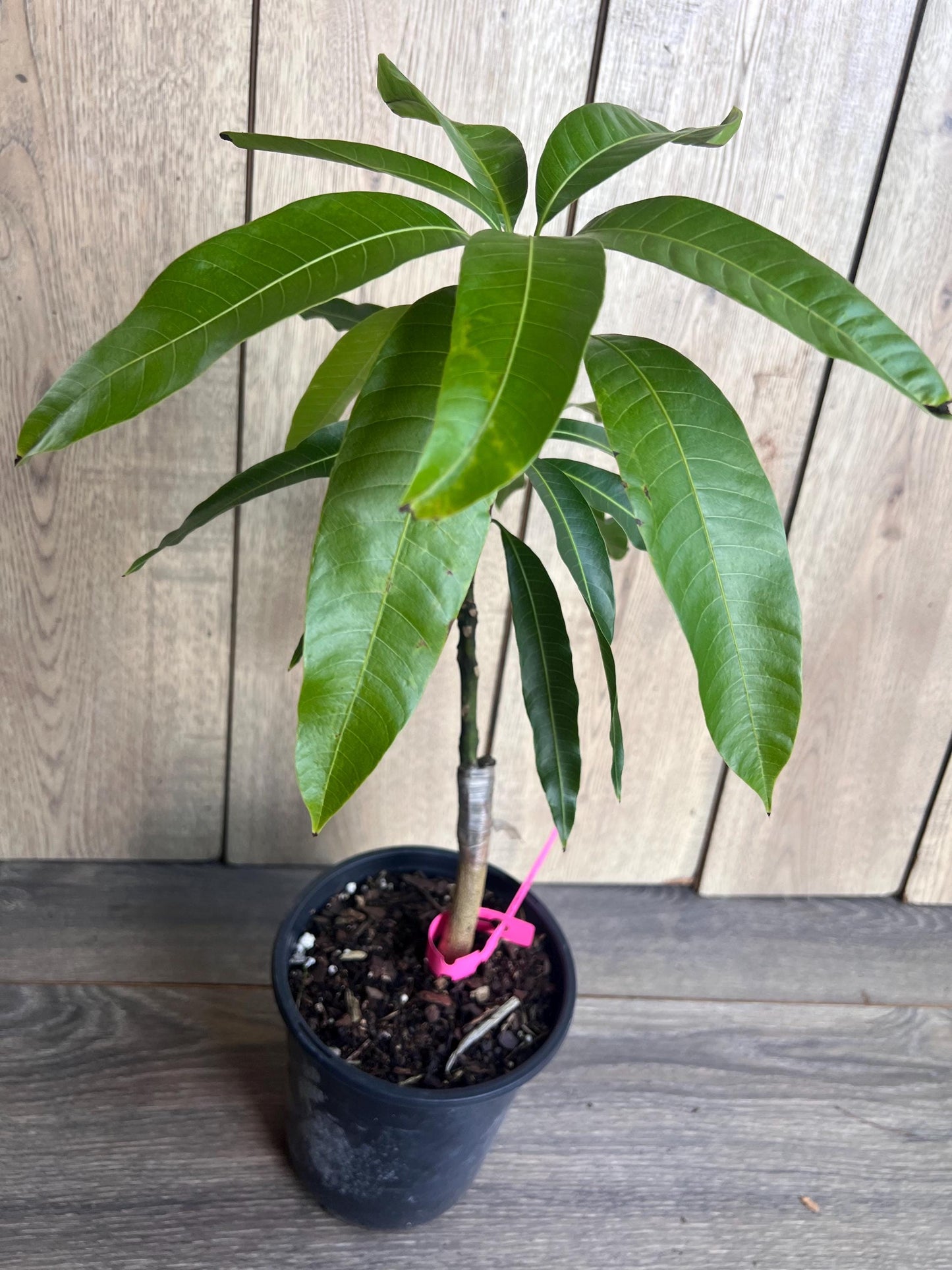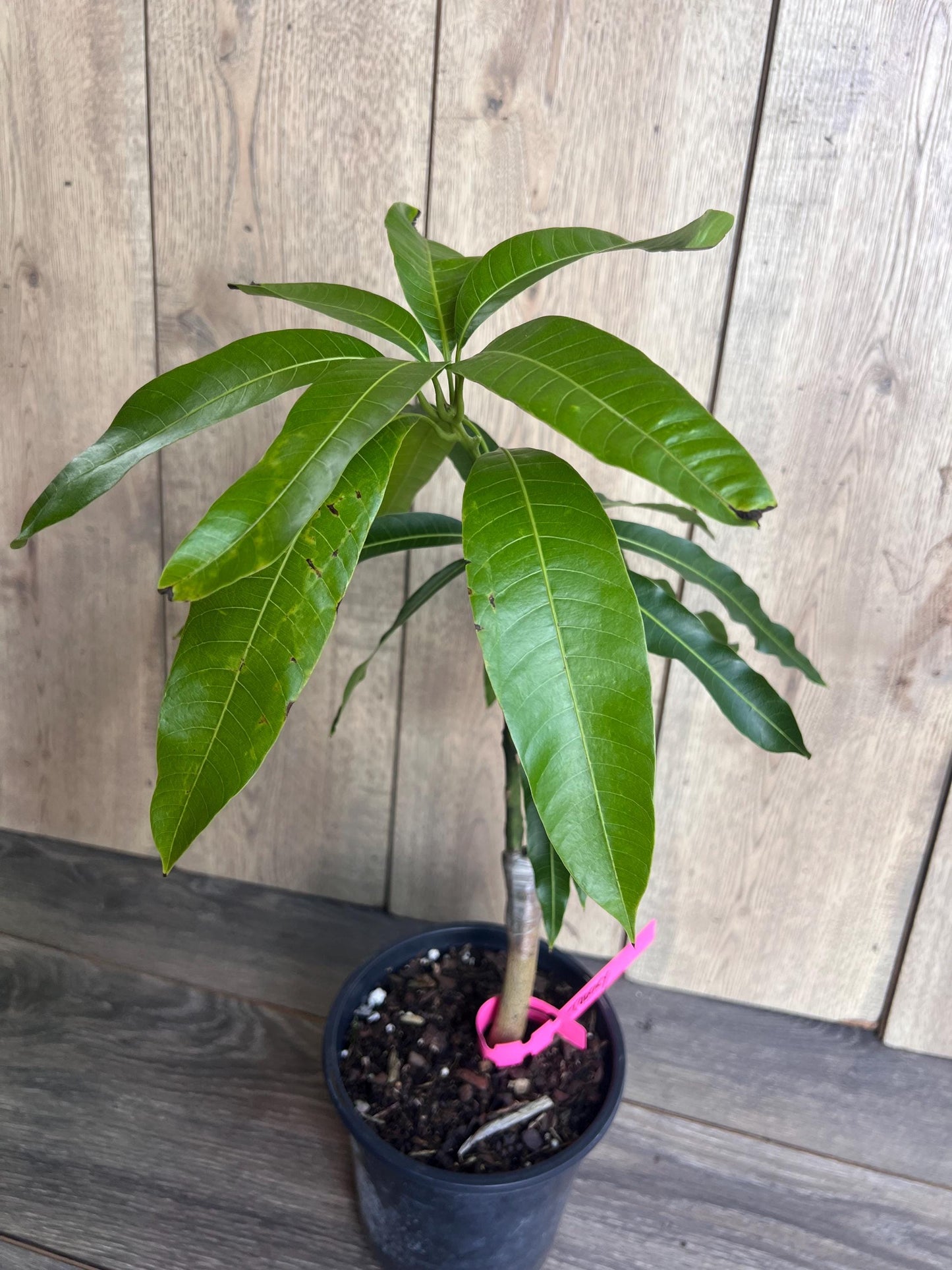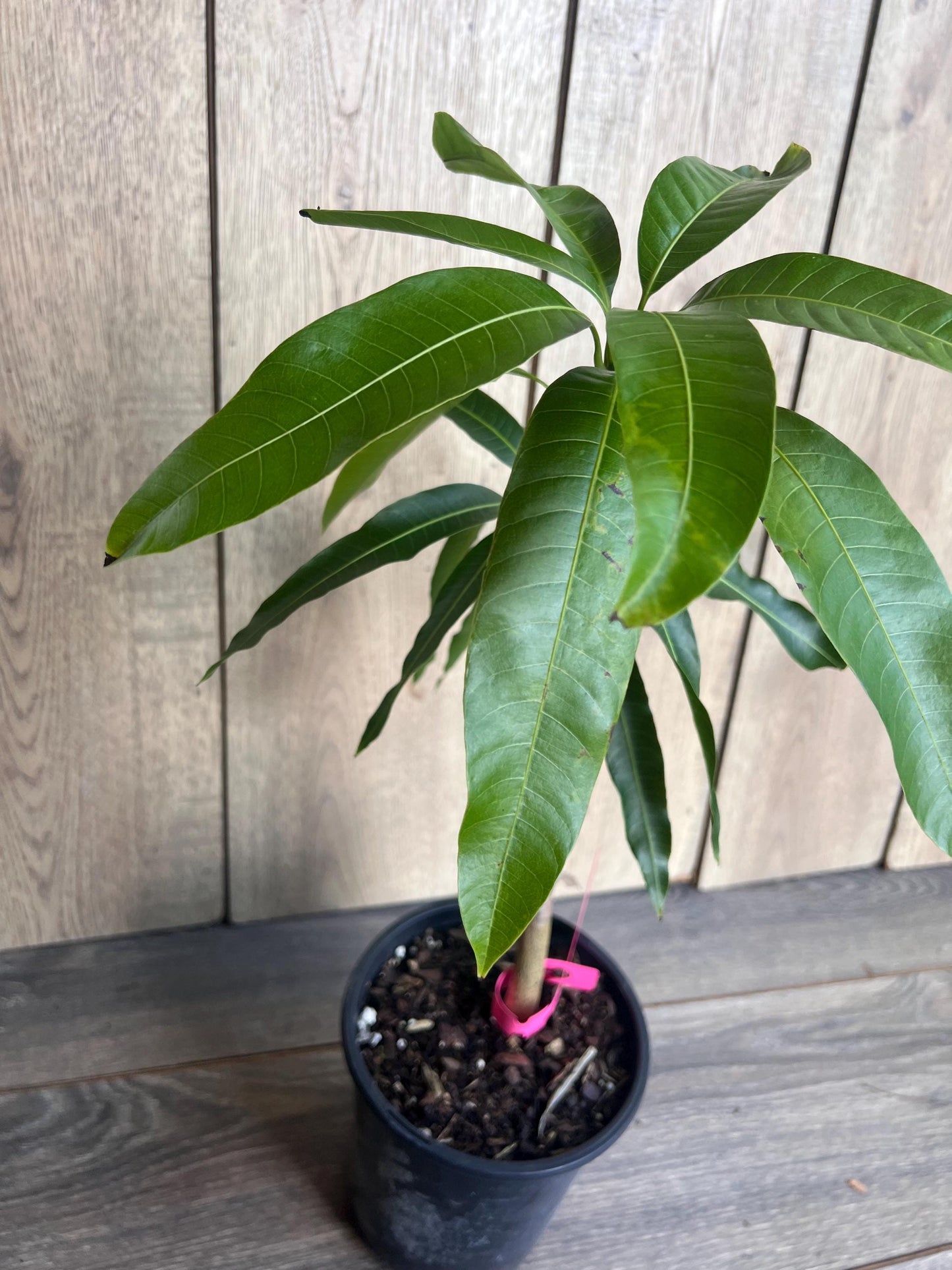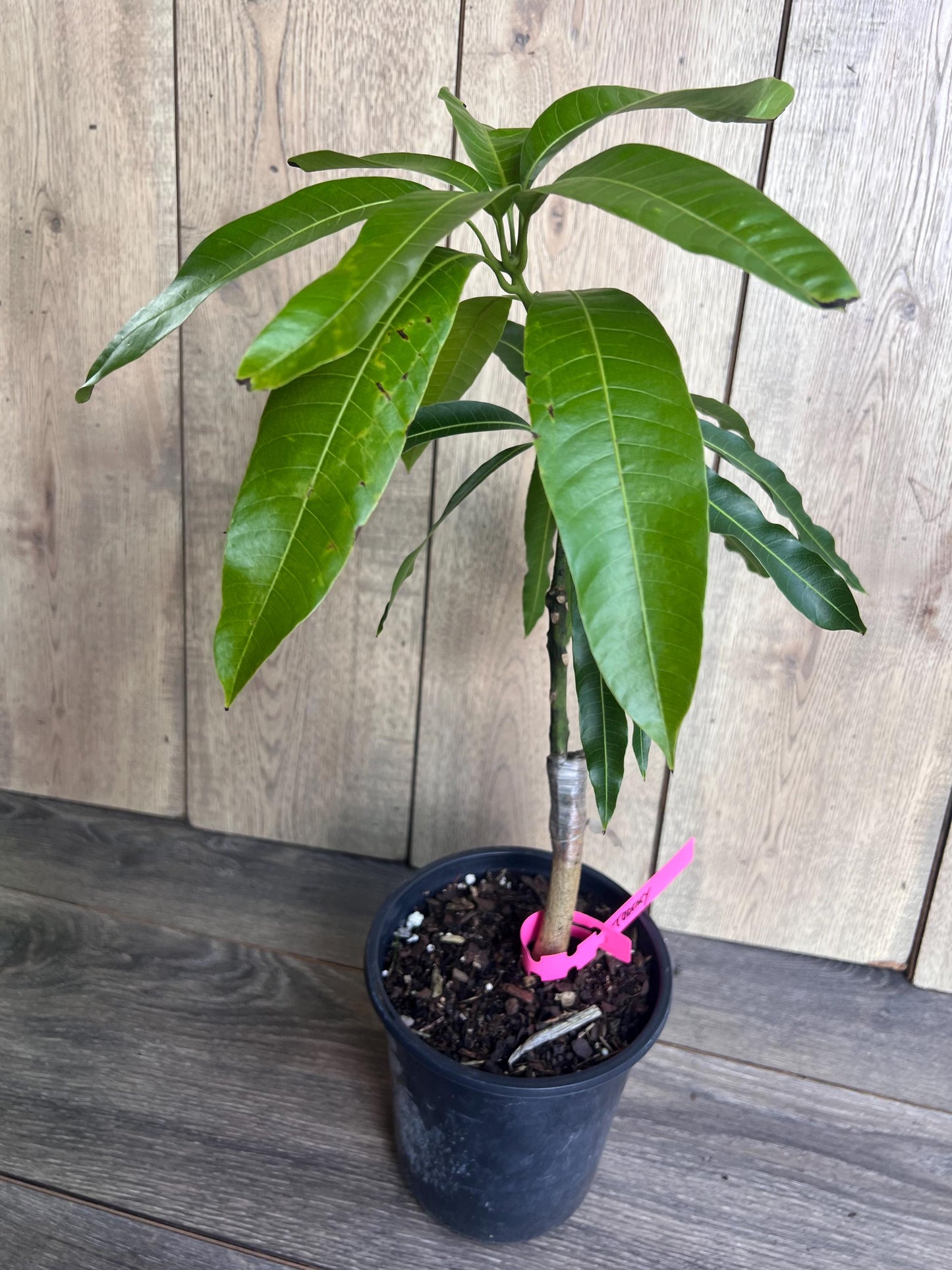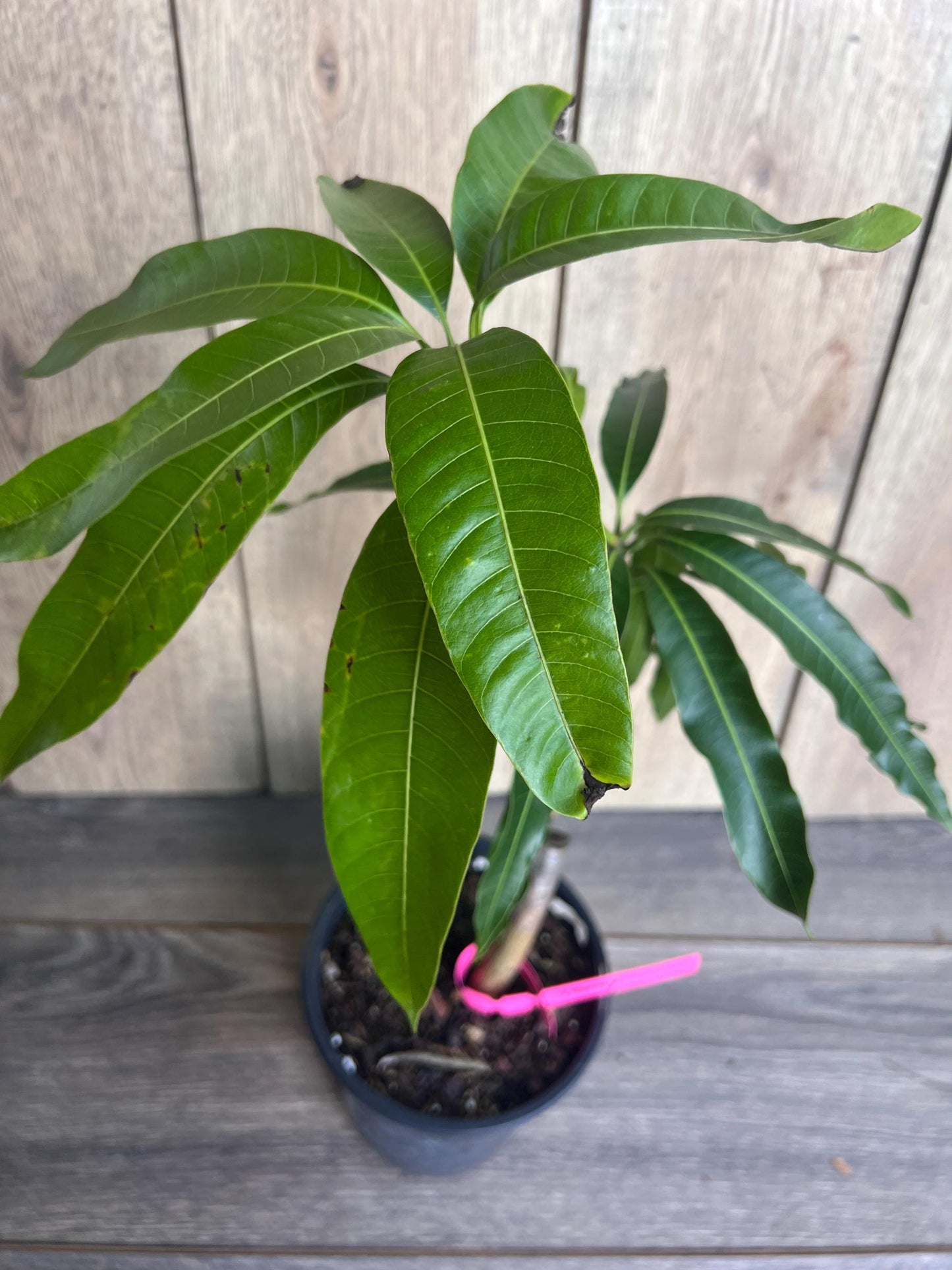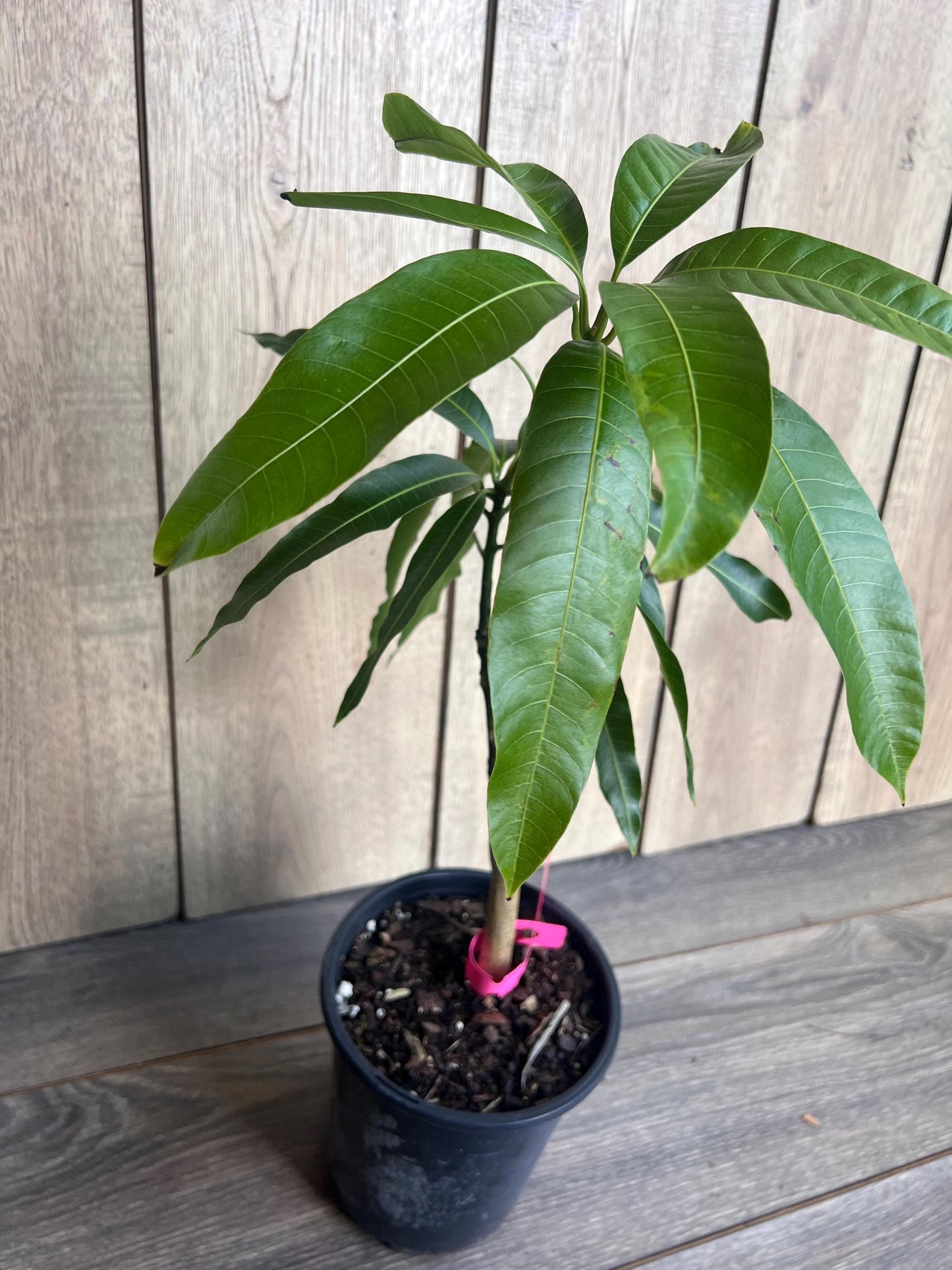1
/
of
8
Tommy Atkins Mango Tree. grafted in 1/2 gallon pot
Tommy Atkins Mango Tree. grafted in 1/2 gallon pot
Regular price
$51.63 USD
Regular price
$68.84 USD
Sale price
$51.63 USD
Unit price
/
per
Shipping calculated at checkout.
Couldn't load pickup availability
Note: You will receive Tommy Atkins Mango Tree in 1/2 Gallon pot similar to the pictures
Tommy Atkins Mango (Mangifera indica) is one of the most popular and widely grown mango varieties, recognized for its vibrant red and green skin, oval shape, and firm, fibrous texture. While it is less aromatic and buttery than some other varieties, its mildly sweet, tangy flavor makes it ideal for fresh consumption, smoothies, salsas, and salads.
Essential Care Tips for Growing Tommy Atkins Mangoes
1. Location and Sunlight
- Full Sun: Mango trees require at least 8 hours of direct sunlight per day to thrive and produce fruit.
- Space: These trees can grow 10-15 feet tall and wide. Plant the tree at least 15-20 feet away from buildings or other trees to ensure adequate air circulation and growth.
2. Soil Requirements
- Well-Draining Soil: Mango trees prefer sandy, loamy, or well-drained soils. Avoid heavy, clayey soils that retain too much moisture, which can cause root rot.
- pH: Ideal soil pH is between 5.5 and 7.5 (slightly acidic to neutral).
- Soil Preparation: Amend clay-heavy soils with organic matter like compost to improve drainage.
3. Watering
- Regular but Not Excessive: Water the tree regularly, especially when young, but allow the soil to dry slightly between waterings. Overwatering can cause root rot.
- Deep Watering: Mango trees have deep roots, so ensure deep watering to promote strong root development.
- Drought Tolerance: Once established, Tommy Atkins mango trees are drought-tolerant but will benefit from regular watering during dry spells to promote better fruiting.
4. Fertilizing
- Balanced Fertilizer: Apply a balanced fertilizer (e.g., 10-10-10) during the growing season to encourage healthy growth. Mango trees particularly benefit from nitrogen-rich fertilizers.
- Fertilization Schedule: Fertilize in spring and summer during the active growing period, but avoid fertilizing late in the season to prevent new growth that might be damaged by cooler temperatures.
- Organic Matter: Adding organic matter like compost or well-rotted manure can help improve soil fertility and encourage healthy growth.
5. Pruning
- Light Pruning: Tommy Atkins mango trees require minimal pruning. Occasionally thin the canopy to improve airflow, reduce disease risk, and encourage better fruit production.
- Remove Dead or Diseased Wood: Prune away any damaged or diseased branches to maintain tree health.
- Prune After Harvest: The best time to prune is after the mangoes have been harvested, typically in late summer or early fall.
6. Pest and Disease Management
- Common Pests: Mango trees can attract pests like aphids, mealybugs, and mango weevils. Regularly inspect the tree and use organic insecticides such as neem oil or insecticidal soap when necessary.
- Fungal Diseases: Mango trees may develop fungal issues like anthracnose or powdery mildew. Avoid wetting the foliage when watering and prune regularly to improve airflow. Fungicides can be applied if needed.
- Mango Weevils: These pests can damage the fruit. Inspect mangoes for holes or signs of insect activity and take action if necessary.
7. Pollination and Fruit Development
- Pollination: While mango trees are self-pollinating, additional nearby trees can enhance fruit set. Mango flowers are pollinated by insects, particularly bees.
- Fruit Set: Mango trees typically flower in late winter or early spring. If the tree is healthy, it will produce fruit in late spring to early summer. Proper soil, water, and nutrients are essential to support fruit development.
8. Temperature and Climate
- Tropical and Subtropical Climates: Tommy Atkins mango trees thrive in warm temperatures between 70°F and 95°F (21°C to 35°C).
- Frost Sensitivity: Mango trees are frost-sensitive and can be damaged by freezing temperatures. In cooler climates, grow the tree in a container so it can be brought indoors or protected from frost during winter.
9. Harvesting
- When to Harvest: Tommy Atkins mangoes typically ripen 4-5 months after flowering, usually in late spring or early summer. The fruit is ready when it is fully colored (green with a red blush) and slightly soft to the touch.
- Harvesting Method: Use pruning shears to cut the fruit from the tree, leaving a small stem attached. Avoid pulling the fruit by hand to prevent damaging the tree or the fruit.
10. Container Growing (For Limited Space or Cooler Climates)
- Container Planting: Tommy Atkins mangoes can be grown in large pots for those with limited space or in cooler climates. Use a container with good drainage and a rich, well-draining potting mix.
- Indoor Care: In cold climates, bring the potted tree indoors during the winter months to protect it from frost. Ensure the indoor environment is warm and away from drafts.
Share

